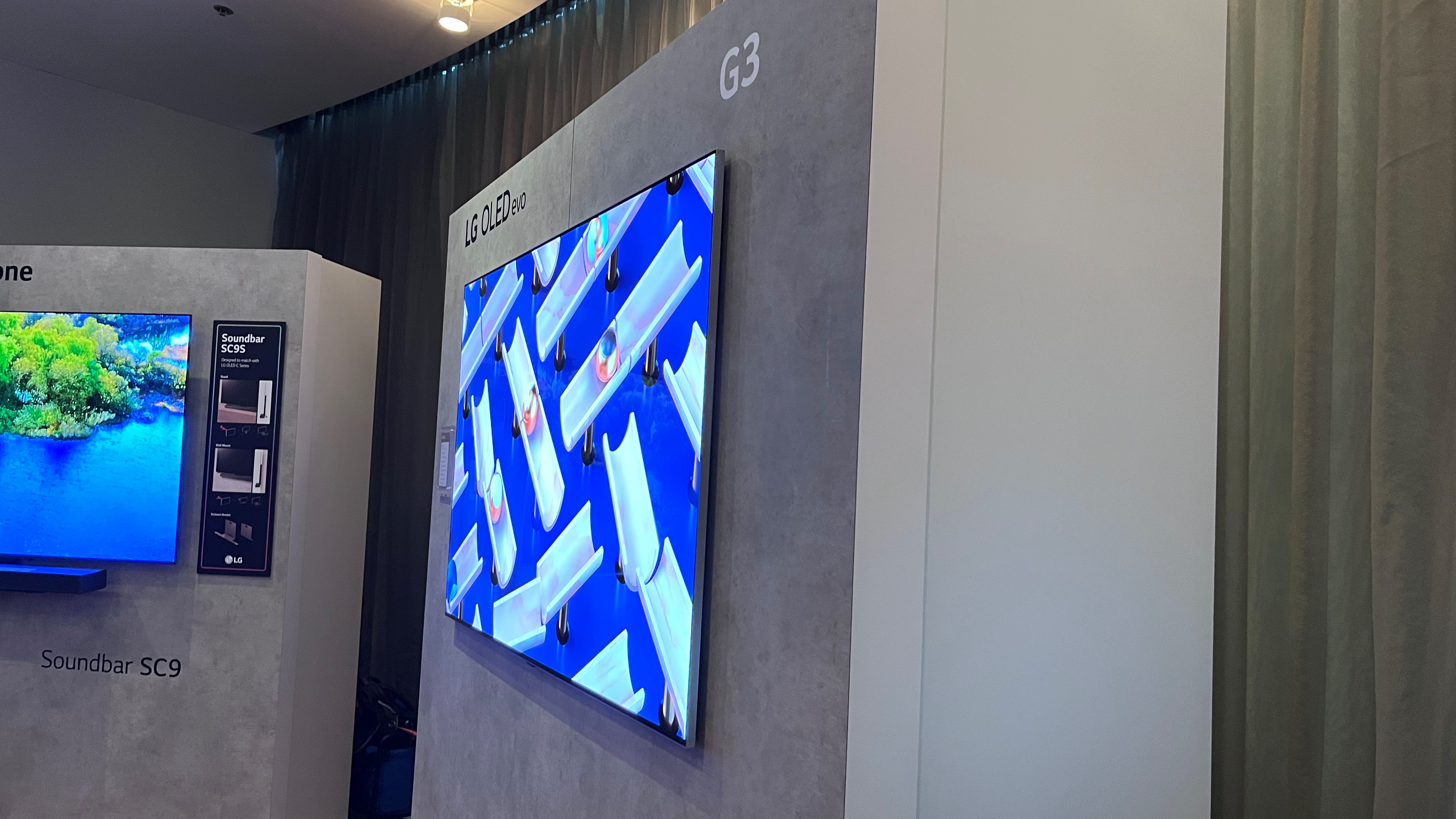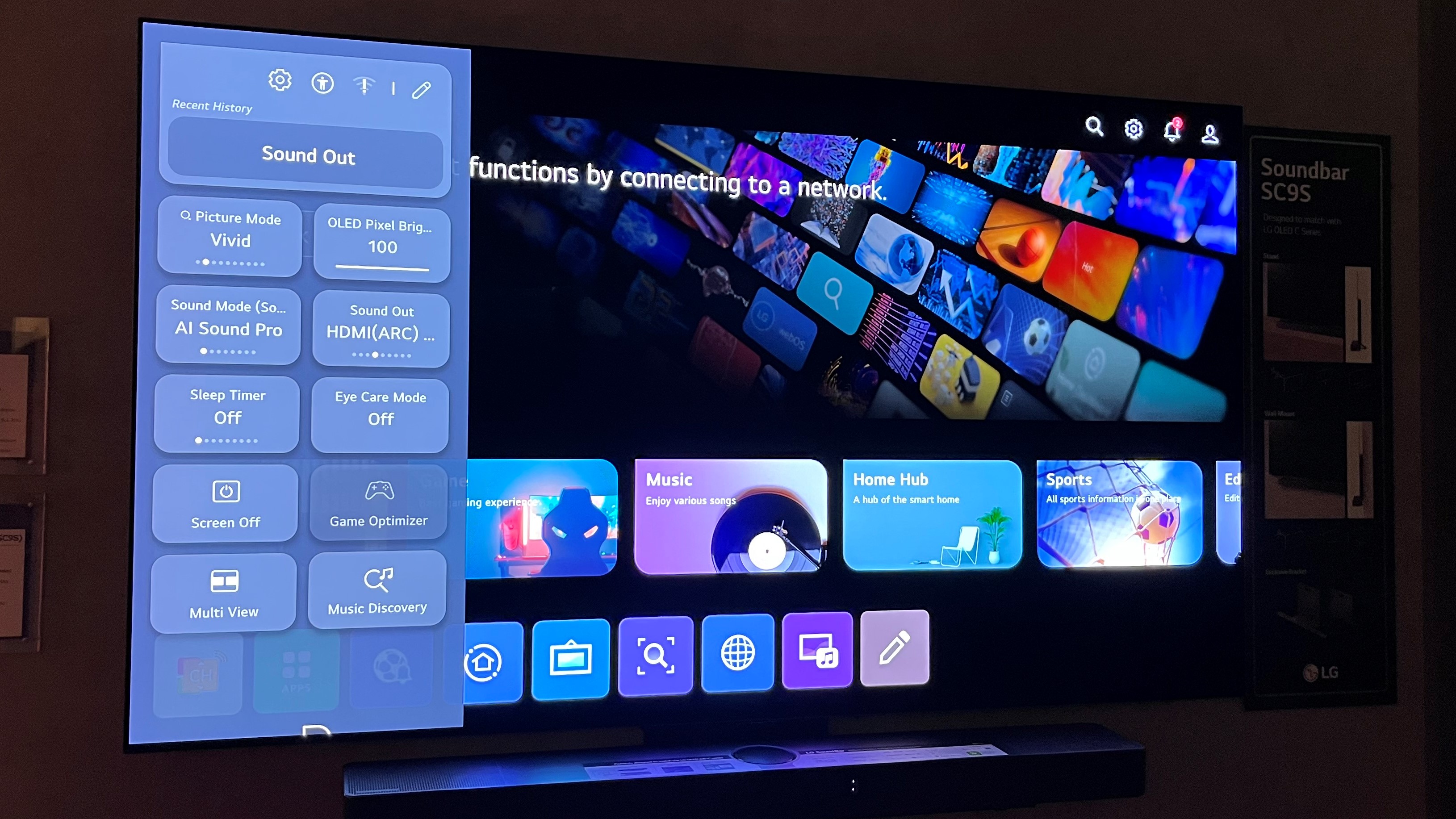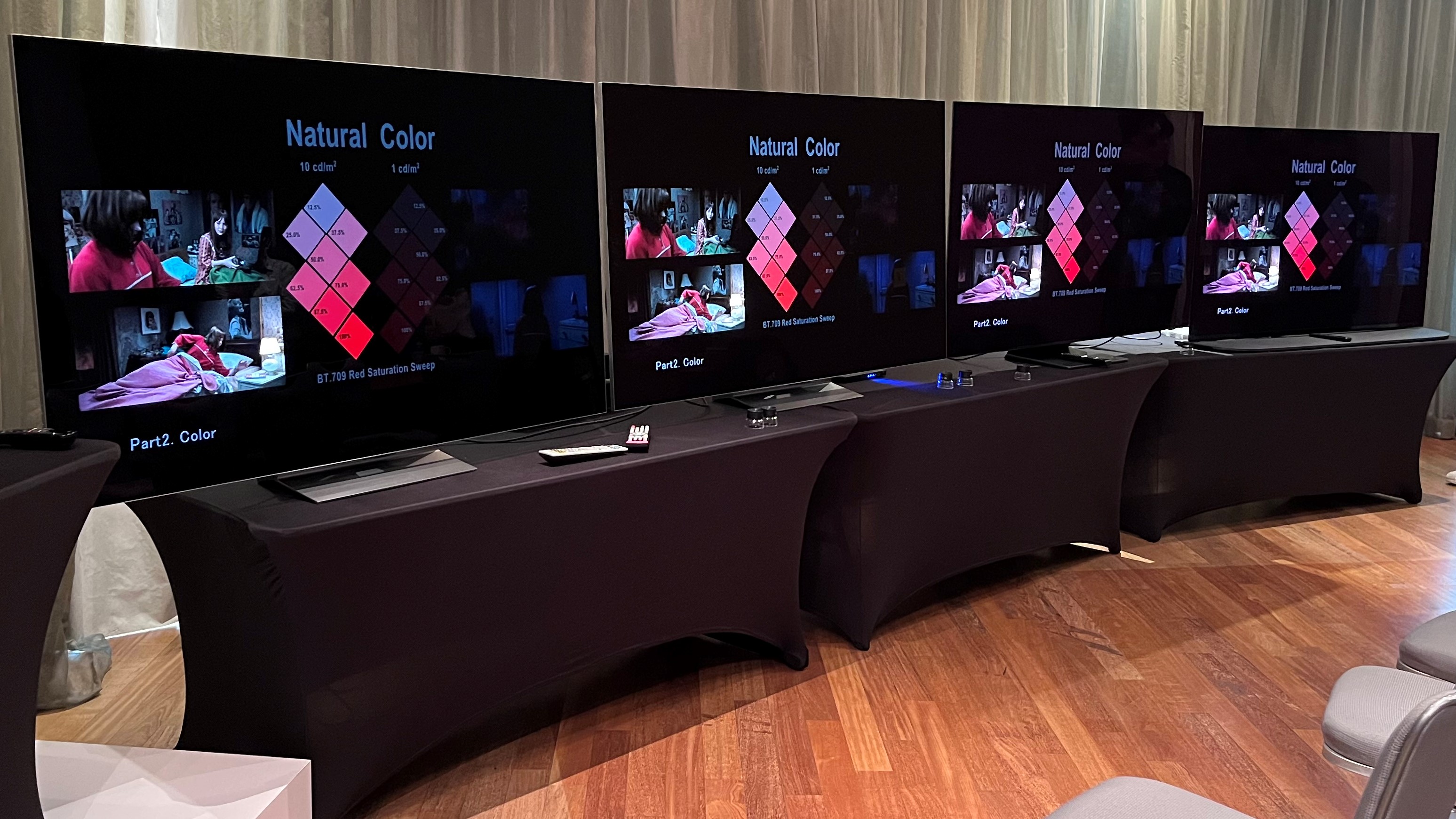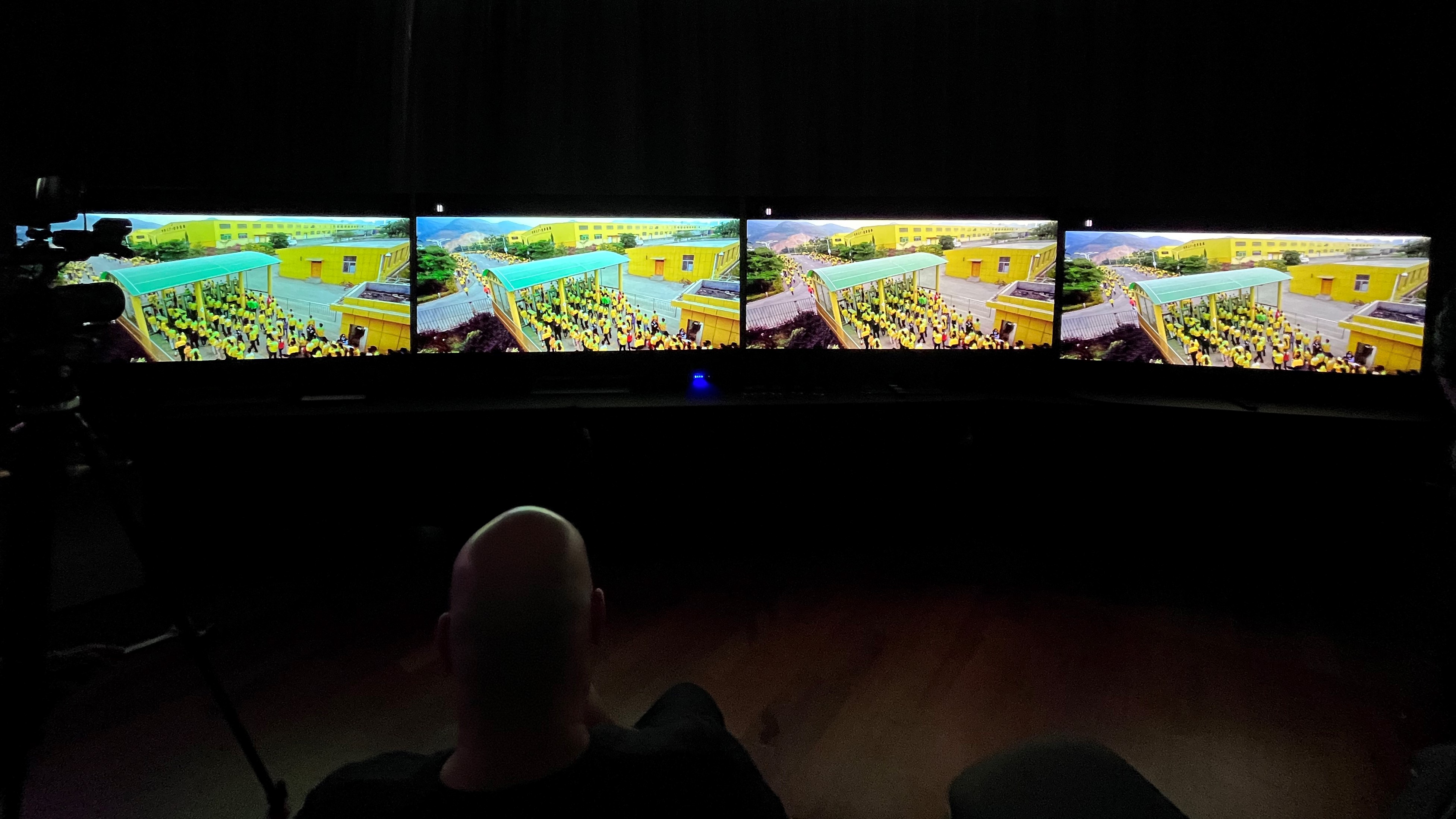LG showed me the new G3 OLED, and it crushes every high-end TV so far
LG's G3 is the company's flagship 4K OLED TV series for 2023, and one that brings a number of improvements over last year's LG G2 series. The G3 OLED TV uses a new α9 Gen6 AI Processor packed with features to enhance high dynamic range images with OLED Dynamic Tone Mapping Pro, which divides pictures into 20,000 blocks and optimizes each one in real time, and HDR Expression Enhancer, a tech that recognizes important aspects of pictures – a face, for example – and then uses deep learning to apply tone mapping and enhance sharpness on that area.
But the more attention-grabbing news about the LG G3 series is Brightness Booster Max, a trio of refinements that serve to increase peak light output on LG's top TVs by 70% over regular OLEDs such as the also-new B3 series models. That feature alone puts the new G3 in the running for our list of the best 4K TVs for 2023, and would rank it among the best OLED TVs as well.
LG invited me to a viewing session where I had the opportunity to get an in-depth briefing and a close look at its new G3 series TV (second screen in from left in above image). We'll dive into the details of that session, and also discuss Brightness Booster Max in more detail, below, but let's first list the new G3 series screen sizes, along with pricing for each when they arrive sometime this month.
- 55-inch: $2,499 / €2,800 / around £2,100
- 65-inch: $3,299 / €4,000 / around £2,760
- 77-inch: $4,499 / €6,300 / around £3,770
- 83-inch: $6,499 / €8,700 / around £5,440
One thing that followers of LG's OLED TV output over the past few years will note is that the company's new models are priced higher than last year's G2 series offerings. That's most likely due to the new brightness enhancing tech included in each, the 83-inch G3 excepted. (That model is priced the same as 2022's 83-inch G2.)
What Brightness Booster Max brings to the table is a new "light control architecture", includes the technology known as MLA. This is actually a structural enhancement to the OLED panel that adds an uneven, "bubbly" lens-like surface that transmits light from the display’s individual pixels more effectively and with less loss than previous OLED models.
Alongside MLA, G3 series OLEDs with Brightness Booster Max feature a light-increasing algorithm called META and a heatsink arrayed across the full expanse of the TV to increase panel efficiency. LG's AI Picture Pro, a feature found in previous models, now also offers improved upscaling of regular HD sources according to the company, while the new new α9 Gen6 AI Processor also powers AI Sound Pro, a tech that delivers virtual 9.1.2-channel audio from the TV's built-in speakers.

Design Details
Each G3 series model provides four HDMI 2.1 (48Gbps bandwidth) ports and supports 4K 120Hz, VRR, FreeSync Premium, and Nvidia G-Sync for gaming. A Game Optimizer on-screen menu lets users easily switch between game genre presets, including a new customizable User option. According to LG, G3 OLEDs are also the first sets to be certified by the HDMI organization for Quick Media Switching Variable Refresh Rate (QMS-VRR), a feature designed to eliminate the "black screen" that can pop up when switching between different HDMI-connected sources.
G3 models will also be outfitted with an ATSC 3.0 tuner for pulling in over-the-air next-gen digital broadcasts in the US.
LG’s "ultra-seamless One Wall Design'' for the G3 models lets them be wall-mounted with no visible gap, and the sets are constructed from a new, lightweight composite fiber material (83-inch model excepted). They also feature Super Anti Reflective technology to reduce screen glare and come with a five-year panel warranty to ease owners' anxiety about OLED screen burn-in, though part of the LG G3 presentation I attended was dedicated to explaining how its WOLED (white plus red, green, and blue pixels) tech is less prone to that issue than competing QD-OLED tech.
A new feature of the webOS 23 smart interface found on G3 models is a Quick Settings menu that provides quick onscreen access to frequently used adjustments (contrast and brightness for example) and also lets users edit the settings located within. Another new feature is Quick Cards, which provides easy access to apps and settings for categories such as Music, Sports, Smart Home, and Home Office. That last Quick Card option will be a good fit for LG's new optional Smart Cam, which can be used for video chats and meetings.
Along with AI Sound Pro, audio features of the G3 series include integration with the company's soundbars, which support Dolby Atmos, DTS:X, and IMAX Enhanced. WOW Orchestra combines an LG soundbar's output with the TV's built-in speakers to widen the soundstage – something it does very effectively in a demo I heard of it – and WOWCAST uses Wi-Fi to make a wireless audio connection between the TV and an external device.

Eyes-on with the LG G3 OLED TV
LG's briefing and viewing session arrayed a 65-inch G3 model alongside the company's G2 OLED, Samsung's S95B QD-OLED, and Sony's A95K QD-OLED (all 2022 models). Each TV was set to its default Filmmaker mode (except for the Sony, which was set to Custom mode) according to the LG rep who conducted the demo.
The comparison started out with a screening of the montage section from the Spears & Munsil UHD HDR Benchmark, with the disc's 4,000 nits option selected. Along with those clips from the S&M montage, LG also screened some of its own test material mastered at 2,000 nits that was designed to stress-test a TV's HDR tone mapping capability.
In each sequence I viewed, the G3 had both better peak and overall brightness than the other three TVs in the comparison. A full white screen test pattern also showed the G3 to have superior white uniformity, something the company attributed to the TV's MLA tech.
The G3's HDR tone mapping of high peak luminance clips was also better than last year's G2 – that new OLED Dynamic Tone Mapping Pro in action – and a significant improvement on what could be seen on both the Samsung and Sony QD-OLED screens. A clip that showed sunlight reflected on the surface of water made for a compelling demonstration of the new G3's capabilities, with highlights showing a wide range of detail that was absent on the G2, and all but obliterated on the two QD-OLED TVs.

Ramp patterns mastered at a low brightness level designed to test a TV's ability to display dark colors also showed the G3 to advantage, with the new LG OLED easily showing red, green, and blue hues descending from dark to near-black. On the Samsung and Sony QD-OLED TVs, these same dark ramp patterns had a pale, washed out appearance.
Another observation I had when viewing both video clips and test patterns in LG's comparison was that the new G3 excelled in delivering light colors in image highlights, performing notably better than last year's competition and the company's own G2 in that respect. It also showed a higher degree of picture detail without coming across as unnaturally crisp or enhanced. These advantages are most likely due to LG's new α9 Gen6 AI Processor, which is only found on the company's 2023 G3, LG C3, and Z3 8K models.

Is LG's new G3 series OLED as good as the company makes it out to be? Given what I saw in LG's comprehensive demo and comparison, it would be hard to argue that it doesn’t crush the existing OLED TV competition. Then again, it was a controlled demo conducted by LG with no hands-on component, so it's impossible to say if the G3 is as demonstrably superior to current models on the market as it appeared to be. It will also face tough competition this year from the Samsung S95C and Sony A95L QD-OLED models, both of which will arrive with improved brightness among other enhancements.
Any final G3 conclusion will come with our own full review, so stay tuned to read that in the near future.
0 comments:
Post a Comment